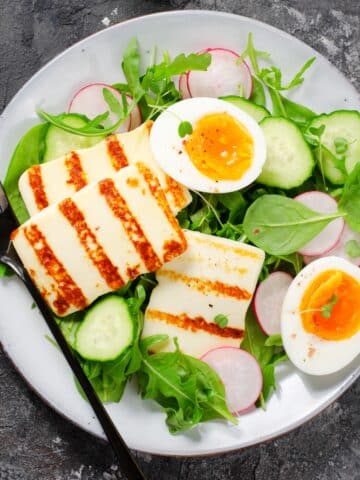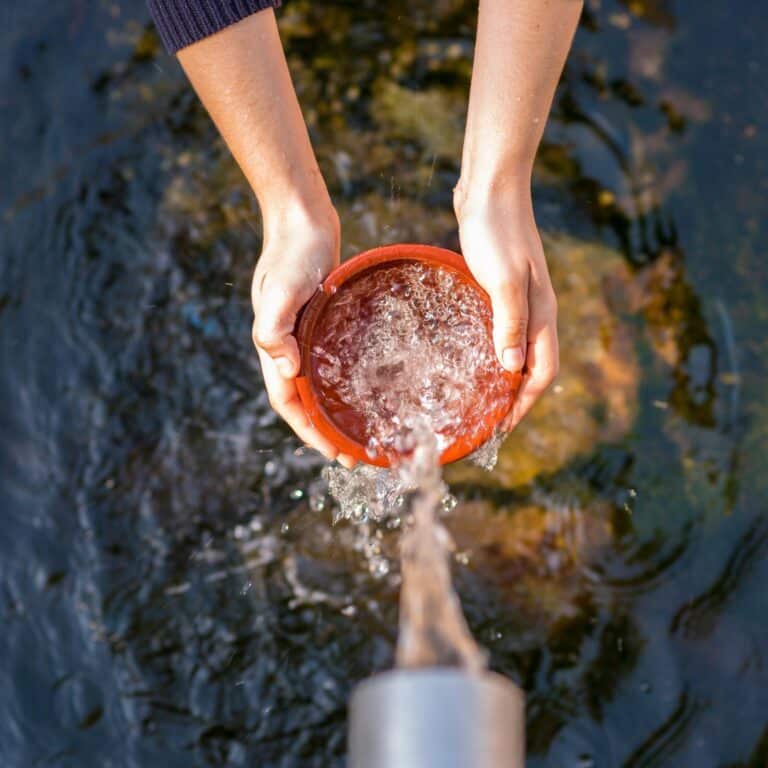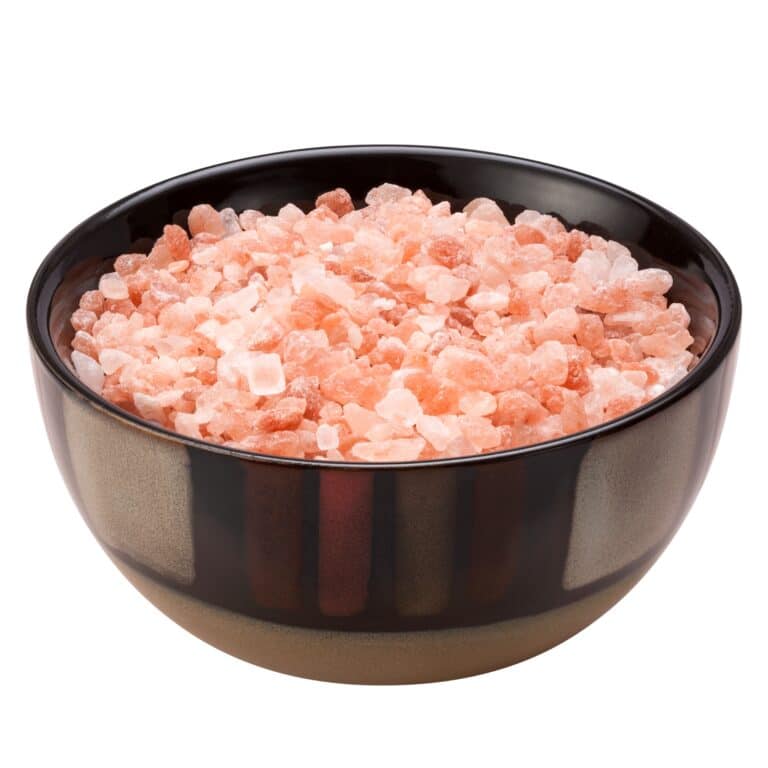How Do You Eat Out on a Low Sodium Diet
Dining out can be a delightful experience, but for individuals on a low-sodium diet, it often comes with challenges. A low-sodium diet is crucial for managing conditions like high blood pressure and heart disease. Navigating restaurant menus while keeping sodium intake in check requires careful consideration and knowledge.
This article digs into the strategies and tips for maintaining a low-sodium diet while enjoying restaurant meals. From understanding hidden sources of sodium to making informed menu choices, we'll explore how to savor the flavors of dining out without compromising your health. Eating out can still be a savory and satisfying adventure with the right approach to low-sodium dining.

Jump to:
- Key Takeaways
- Understanding Low-Sodium Diets
- Complications of Not Following a Low Sodium Diet
- Choosing the Right Restaurant
- Asking Your Waitstaff
- Navigating the Menu
- Making Special Requests
- Recognizing High-Sodium Foods
- Selecting Lower-Sodium Foods
- Limiting Sodium in Desserts
- Frequently Asked Questions
- Limiting Salt Intake Is Difficult But Not Impossible
Key Takeaways
- Understanding the basics of a low-sodium diet and the foods to enjoy and avoid is essential for successfully eating out on a low-sodium diet.
- It is important to choose restaurants that are knowledgeable about sodium content and offer low-sodium options.
- Engaging with waitstaff and asking informed questions is crucial for navigating sodium content, portion control, and identifying low-sodium options on the menu.
- Effective communication with waitstaff, including discussing dietary needs, ingredient sourcing, and dish preparation methods, is essential for a low-sodium dining experience.
For More Recipes and Ideas --->> Get Your Free Meals and Recipes That Are Perfect for Pre-Dialysis Diets, Pre-Dialysis with Diabetes, or Dialysis Diets.
Understanding Low-Sodium Diets
Understanding a low-sodium diet is crucial for your health and dining experience.
First, we'll cover the basics of this diet, including what foods you can enjoy and which ones to avoid. Then, we'll explore the health benefits and possible challenges you may encounter while following a low-sodium diet.
Low-Sodium Diet Basics
A low-sodium diet, commonly associated with special diets like the renal diet, is designed to restrict the intake of sodium, a mineral found in salt (sodium chloride) that plays a significant role in regulating bodily fluids and blood pressure. This dietary approach is essential for individuals with conditions such as kidney disease, heart disease, high blood pressure (hypertension), and edema.
The primary goal of a low-sodium diet is to reduce sodium intake to a level that helps manage these health conditions effectively. This involves minimizing the consumption of high-sodium foods, which include processed and fast foods, canned soups, salty snacks, and restaurant meals. Instead, individuals following a low-sodium diet are encouraged to focus on fresh, whole foods like fruits, vegetables, lean proteins, and whole grains.
For those on a renal diet due to kidney issues, maintaining sodium balance is crucial because damaged kidneys may struggle to excrete excess sodium effectively. This can lead to fluid retention and increased blood pressure. Reducing sodium intake is essential for preventing these complications and supporting overall kidney function.
In addition to dietary changes, individuals on a low-sodium diet should pay attention to food labels, choose low-sodium cooking methods, and be mindful of hidden sources of sodium. The guidance of a healthcare provider or dietitian is invaluable in tailoring the diet to an individual's specific needs while ensuring that essential nutrients are not compromised.
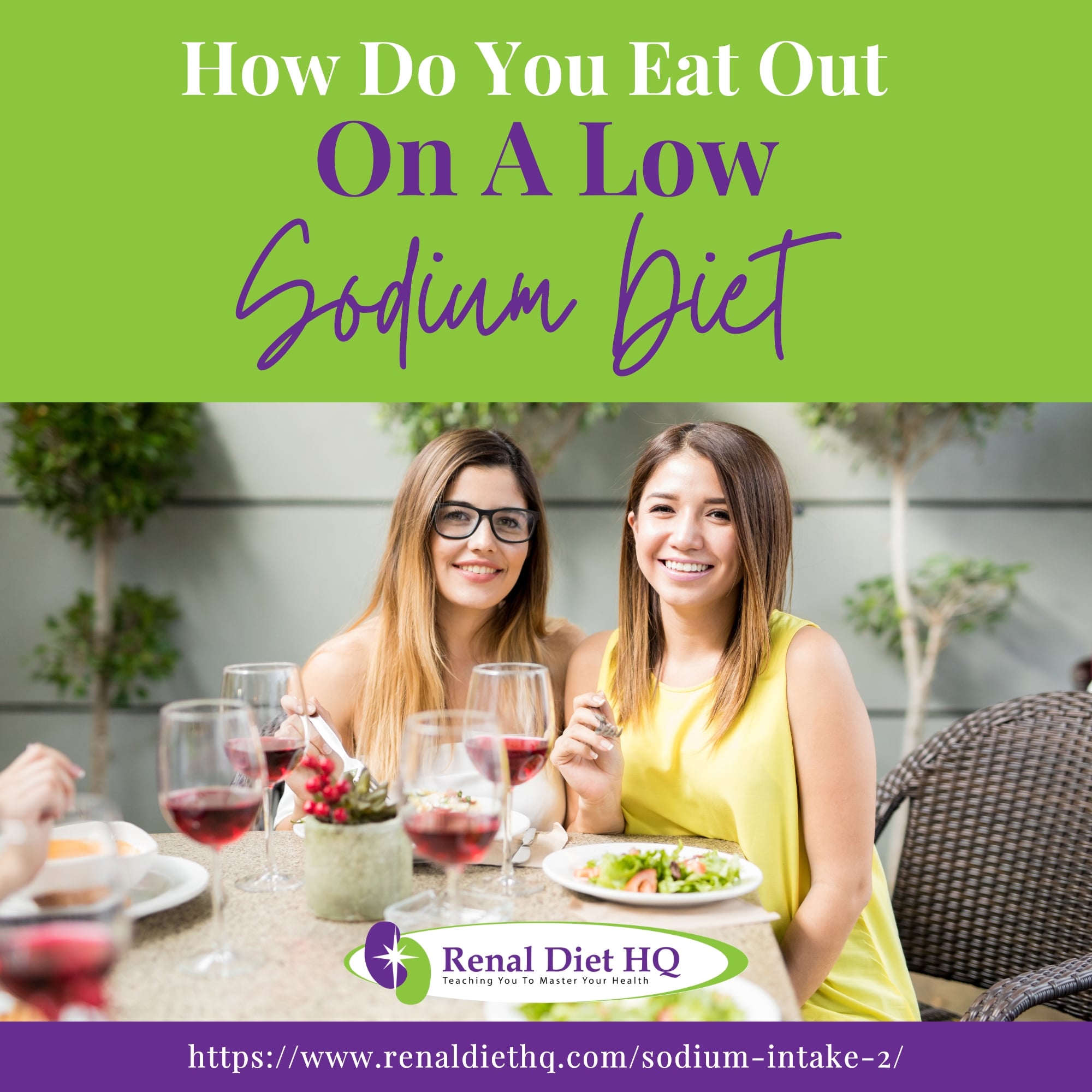
Health Benefits & Challenges
A low-sodium diet offers profound health benefits, particularly for individuals with Chronic Kidney Disease. It plays a crucial role in managing blood pressure and fluid balance, both of which are vital for preserving kidney function. By reducing sodium intake, individuals with CKD can effectively control hypertension and fluid retention, two common complications that can exacerbate kidney damage.
However, adhering to a low-sodium diet presents distinct challenges, especially when dining out. Restaurant meals frequently contain excessive sodium due to the liberal use of salt and sodium-rich ingredients.
This can make it difficult for CKD patients to find suitable menu options that adhere to their dietary restrictions. Determining the exact sodium content of restaurant dishes is also often a challenge.
To address these issues, individuals with CKD need to communicate their dietary needs to restaurant staff, request modifications to dishes, and choose restaurants known for accommodating special dietary requirements. At home, they should closely scrutinize food labels, use low-sodium cooking techniques, and work with dietitians or healthcare providers to create a practical low-sodium diet plan tailored to their unique needs.
Complications of Not Following a Low Sodium Diet
Not following a low sodium diet, particularly in the context of Chronic Kidney Disease, can lead to a host of severe complications. High sodium intake significantly strains the already compromised kidneys, exacerbating the progression of CKD and raising the risk of adverse health outcomes. Some complications include:
Hypertension, which is often exacerbated by excessive sodium intake, is a leading cause of CKD and can accelerate kidney damage. Uncontrolled hypertension further stresses the kidneys and worsens their function.
One of the consequences of high sodium intake is fluid retention, which results in swelling (edema). This edema can affect various parts of the body, including the legs and lungs. As a result, individuals may experience shortness of breath and increased blood pressure, causing further harm to both the heart and the kidneys.
In addition to the direct impact on kidney function, high sodium levels can disrupt the balance of other electrolytes, such as potassium. An electrolyte imbalance can have detrimental effects on the body, particularly in terms of heart and muscle function.
Cardiovascular complications are a significant concern. High sodium intake is linked to worsening heart health, increasing the risk of heart disease, stroke, and heart failure—conditions that are already prevalent in CKD patients.
Furthermore, fluid retention can lead to pulmonary edema, a condition in which the lungs become filled with fluid. This can significantly impair breathing and cause severe discomfort.
The progression of kidney disease can be accelerated by high sodium intake. This potentially leads to kidney failure, a point at which individuals may require dialysis or transplantation for survival.
Managing complications arising from high sodium intake may necessitate an increased dependency on medications. This can add to the treatment burden, which is already significant for CKD patients.
Finally, the risks extend beyond kidney-related issues. High sodium intake can negatively affect bone health, increase the risk of gastric issues, and even contribute to an elevated risk of cancer and other chronic diseases. Adhering to a low sodium diet is essential to slow the progression of kidney disease, manage complications, and reduce the risk of life-threatening health issues.
Choosing the Right Restaurant
Choosing the right restaurant is a crucial step in maintaining a low sodium diet while eating out. You'll want to ensure the restaurant is knowledgeable about the sodium content in their dishes and willing to accommodate special dietary requests.
This choice can make or break your commitment to a low sodium lifestyle, so it's important to make an informed decision.
Restaurant's Sodium Content Knowledge
For individuals on a low-sodium diet, having accurate information about the sodium content of restaurant menus is of paramount importance. Restaurant meals are notorious for their often hidden and excessive salt use, making it challenging for those with specific dietary restrictions, such as people with Chronic Kidney Disease, to make informed choices.
By knowing the sodium content of their dishes, restaurants can not only provide transparency but also cater to a broader clientele, including those with health conditions like CKD. This knowledge allows individuals to make healthier, more compliant choices when dining out, reducing the risk of exceeding their daily sodium limits.
Moreover, it empowers people to enjoy restaurant meals without compromising their health. Accurate labeling and readily available sodium information can go a long way in promoting inclusivity and health-conscious dining options for everyone.
Special Dietary Requests Accommodation
Accommodating special dietary requests, such as a low sodium diet, is an essential aspect of providing inclusive and responsible service in restaurants. People with health conditions like Chronic Kidney Disease heavily rely on accurate sodium control to manage their well-being. Restaurants can play a pivotal role in this by offering customized, low-sodium options on their menus.
Accommodation involves training staff to understand dietary restrictions and preparation techniques that minimize sodium content. Chefs can adapt recipes, using herbs, spices, and alternative seasonings to enhance flavor without relying on salt. Offering low-sodium condiments and clearly labeling menu items with their sodium content is also crucial.
By doing so, restaurants not only support the health and well-being of individuals with dietary restrictions but also foster loyalty among patrons who appreciate their commitment to customer care. This level of accommodation enhances the dining experience for all, irrespective of their dietary needs.
Asking Your Waitstaff
When dining out and following a low sodium diet, effectively communicating your dietary needs to the waitstaff is essential for a safe and enjoyable experience. Here's a guide on how to request low sodium options or menu modifications:
- Be Polite and Clear: Approach your server with courtesy, explaining that you're on a low sodium diet for health reasons. A friendly tone helps ensure a positive interaction.
- Ask Questions: Inquire about specific dishes and their sodium content. Don't hesitate to ask how items are prepared and cooked.
- Request Modifications: Politely ask if they can accommodate your dietary needs. For instance, request that your meal be prepared without added salt or high-sodium seasonings.
- Suggest Seasoning Alternatives: You can suggest using herbs, spices, lemon juice, or vinegar as flavor enhancers in place of salt.
- Check for Low-Sodium Options: Many restaurants now offer low-sodium or heart-healthy menu sections. Inquire about these alternatives.
- Emphasize Allergies: If you have a medical condition, such as CKD, that requires strict sodium control, emphasize that your dietary restrictions are crucial for your health.
- Double-Check: Once your meal arrives, double-check with the server to ensure it was prepared as requested.
- Show Appreciation: If the restaurant accommodates your needs, express your gratitude for their assistance.
By being clear, polite, and respectful in your requests, you can enjoy a delicious restaurant meal while adhering to your low sodium diet.
Navigating the Menu
When you're dining out, navigating the menu plays a crucial part in maintaining your low-sodium diet. It's important to learn how to identify low-sodium options and understand the nutritional information provided.
In the following section, we'll guide you through these aspects, helping you to make informed choices.
Identifying Low-Sodium Options
Identifying low sodium options on restaurant menus requires careful scrutiny and effective communication.
To make informed choices, start by reviewing menu descriptions. Pay close attention to keywords like "grilled," "steamed," "baked," and "fresh," as these dishes are often lower in sodium.
If available, ask for nutritional information to learn about the sodium content of specific dishes. Many modern restaurants now include special diet sections on their menus, such as "heart-healthy" or "low-sodium," making it easier to find suitable options.
Engage with your server or the restaurant staff; they can provide insights into sodium levels in various dishes and help you make informed choices. Don't hesitate to ask for modifications like no added salt, sauces on the side, or specific seasonings to meet your dietary needs.
Opt for freshly prepared items, as restaurant dishes prepared from scratch are more likely to allow for sodium control. Being proactive and informed is key to finding low sodium options in restaurant menus and maintaining a healthy diet, especially when dining out.
Understanding Nutritional Information
When following a low-sodium diet, navigating nutritional information on restaurant menus is crucial. Start by looking for menus with clear nutritional details.
Focus on dishes labeled as heart-healthy or low-sodium options. Pay close attention to sodium content per serving. Beware of menu items with buzzwords like "smoked," "pickled," or "brined," as these often indicate higher sodium levels.
Ask your server for assistance in choosing low-sodium options and request modifications like no added salt or sauces on the side. Inquire about food preparation methods, favoring grilled, steamed, or baked dishes over fried ones.
Remember that fresh, whole ingredients are typically lower in sodium than processed foods. By navigating restaurant menus thoughtfully, you can enjoy dining out while maintaining your low-sodium dietary restrictions.
Making Special Requests
Don't hesitate to communicate your dietary needs to the wait staff clearly; they're there to ensure your dining experience is enjoyable.
Ask to modify your order by substituting high sodium sauces and dressings with lower sodium or no-sodium options.
These special requests can significantly help you maintain your low sodium diet while eating out.
Communication With Wait Staff
When dining out and adhering to a low-sodium diet, effective communication with restaurant waitstaff is key. Begin by politely and clearly expressing your dietary needs. Mention your low-sodium requirement and any specific restrictions.
Ask questions about menu items, including their preparation methods and ingredients. Inquire about sodium-free seasonings or alternatives, and request dishes with little to no added salt.
Be courteous and patient while explaining your needs, and appreciate their willingness to accommodate. If necessary, ask the staff to check with the kitchen or chef to confirm sodium levels.
Remember that a smile and gratitude go a long way in ensuring a positive dining experience. Effective communication with wait staff helps you enjoy a restaurant meal tailored to your low-sodium diet while fostering understanding and cooperation in providing a safe and satisfying dining experience.
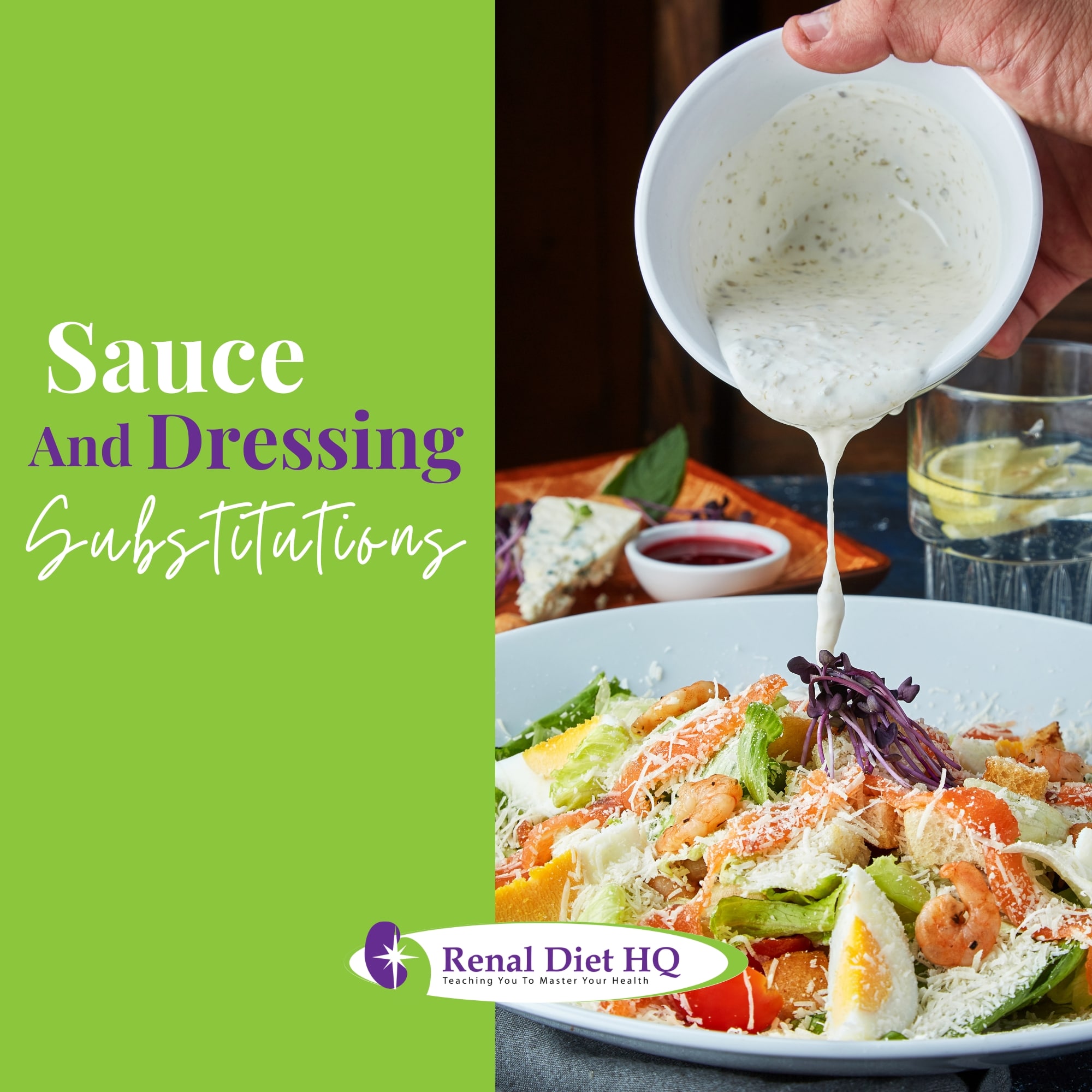
Sauce and Dressing Substitutions
When dining out on a low-sodium diet, modifying sauces and dressings can be a powerful strategy.
Many restaurant dishes come with high-sodium sauces and dressings. Requesting modifications, such as asking for sauces on the side or for your meal to be prepared without high-sodium ingredients, can significantly reduce sodium intake.
Opt for simple, freshly prepared dishes, as they're more likely to be lower in salt. Additionally, explore healthier, low-sodium condiment alternatives like olive oil, vinegar, lemon juice, or herbs to enhance the flavor of your food.
When ordering salads, request dressings separately, allowing you to control the amount you use. These small adjustments not only contribute to a more heart-healthy meal but also allow you to enjoy dining out while staying true to your low-sodium dietary needs.
Recognizing High-Sodium Foods
Recognizing high-sodium foods while dining out is key to sticking to your low sodium diet. You'll need to be aware of certain dishes that are typically high in sodium in restaurants and know how to spot sodium content on menus.
More importantly, it's essential to understand the common high-sodium traps that can catch you off guard.
High-Sodium Foods in Restaurants
When following a low-sodium diet in restaurants, it's essential to be aware of high-sodium foods to avoid. Some common culprits include:
- Processed Meats: Dishes with bacon, ham, sausages, or deli meats are often packed with sodium. These are prevalent in breakfast items, sandwiches, and salads.
- Canned Soups: Many soups, especially those labeled as "homemade" or "daily special," may contain excessive salt. Even seemingly healthy options like chicken noodle soup can be high in sodium.
- Condiments and Sauces: Watch out for soy sauce, ketchup, barbecue sauce, and salad dressings, which are sodium-rich. These are often used in marinades, dips, and dressings.
- Fried Foods: French fries, fried chicken, and other deep-fried items tend to be heavily salted. Opt for grilled or baked alternatives.
- Cheese: Cheese-based dishes, like pizza and pasta, are sodium-heavy. You can ask for less cheese or opt for low-sodium cheese when available.
- Fast Food: Burgers, fries, and most items from fast-food chains typically contain excessive sodium.
- Cured and Smoked Foods: Items like smoked salmon, pastrami, or pickles are high in salt.
- Frozen Entrees: Many restaurants serve frozen entrees, which are often loaded with sodium to enhance flavor and preserve the food.
Being mindful of these high-sodium foods and making requests for modifications when dining out can help you maintain a low-sodium diet while enjoying restaurant meals.
Identifying Sodium in Menus
Identifying high-sodium foods in restaurant menus is essential for individuals following a low-sodium diet. Here are some strategies to help you make informed choices:
- Review the Menu Carefully: Take your time to read the menu thoroughly. Look for keywords like "pickled," "smoked," "cured," "brined," or "marinated," as these often indicate high-sodium items.
- Ask for Nutritional Information: Many restaurants now provide nutritional information upon request. Inquire about the sodium content of dishes or look for menus with this information included.
- Look for Dietary Symbols: Some restaurants use symbols or icons to indicate low-sodium or heart-healthy options. Keep an eye out for these.
- Consider Preparation Methods: Grilled, roasted, and steamed dishes are generally lower in sodium than fried, battered, or breaded options.
- Inquire About Sauces and Seasonings: Ask your server about the sauces, dressings, or seasonings used in a particular dish. Request alternatives or ask for them to be served on the side so you can control the amount.
- Customize Your Order: Don't hesitate to request modifications, such as omitting high-sodium ingredients or asking for sauces and dressings on the side.
By being attentive and proactive when perusing restaurant menus, you can make healthier choices and enjoy meals that align with your low-sodium dietary needs.
Selecting Lower-Sodium Foods
Now that you're familiar with high-sodium foods, let's shift our focus to identifying lower-sodium alternatives.
It's crucial to understand a food's sodium content before making a choice.
Low Sodium Food Items
When dining out on a low sodium diet, there are various food items you can enjoy without significantly increasing your sodium intake. Opt for dishes like grilled or roasted lean proteins, such as chicken, fish, or lean cuts of beef, as they are typically lower in sodium.
Choose steamed or sautéed vegetables and request no additional salt. Salads with fresh vegetables and vinaigrette dressing on the side are often good choices. Baked or boiled potatoes can be a low-sodium side dish if not heavily salted.
Sushi with low-sodium soy sauce and sashimi can be a flavorful option. When ordering sandwiches, go for whole grain bread and ask for unsalted or low-sodium deli meats. Lastly, look for menu items labeled as "heart-healthy" or "low-sodium" as these are tailored to dietary restrictions and often delicious.
Choosing Low-Sodium Alternatives
People on a low sodium diet can still enjoy flavorful alternatives to high-sodium foods. For a salt substitute, herbs and spices like garlic, basil, oregano, and lemon zest can add depth to dishes without the excess sodium.
When craving a salty snack, air-popped popcorn or unsalted nuts are great choices. Instead of processed condiments like ketchup or soy sauce, opt for homemade versions with reduced or no salt. For added flavor in cooking, try using low-sodium broth or bouillon.
Low-sodium canned vegetables and beans are readily available and make excellent additions to various dishes. When marinating meats or tofu, choose vinegar or citrus-based marinades. Fresh, whole ingredients like fruits, vegetables, and unprocessed grains can be used to create satisfying, low-sodium meals that are both healthy and delicious.
Limiting Sodium in Desserts
Satisfying your sweet tooth while on a low sodium diet is possible with a variety of delectable low sodium dessert options.
Fresh fruits, like berries, melons, or citrus, are naturally low in sodium and provide a naturally sweet and refreshing finish to a meal. Greek yogurt topped with honey and a sprinkle of cinnamon is another delightful option.
For a homemade treat, consider baking low sodium cookies or cakes using sodium-free or low sodium baking powder and unsalted butter. Sorbets and gelato can be enjoyed in moderation, especially those specifically labeled as low sodium.
Dark chocolate with a cocoa content of 70% or higher is often low in sodium and can be savored as an occasional indulgence. When it comes to desserts, creativity knows no bounds, and with some culinary ingenuity, you can create a wide array of low sodium delights that satisfy your dessert cravings while supporting your dietary restrictions.
Frequently Asked Questions
A low sodium diet can significantly impact overall health and well-being, particularly for those with conditions like high blood pressure or kidney problems. Reducing sodium intake helps regulate blood pressure, lowering the risk of heart disease and stroke. It also supports kidney function by reducing the strain on these organs.
Moreover, it aids in maintaining a healthy weight, as high sodium foods often contain empty calories. However, challenges include finding flavorful alternatives and navigating restaurant menus. Overall, adopting a low sodium diet can lead to improved health, reduced risk of chronic diseases, and enhanced well-being for many individuals.
Managing cravings for salty foods on a low sodium diet can be challenging but is essential for maintaining health. Firstly, gradually reduce sodium intake to adapt taste buds. Experiment with herbs, spices, and low-sodium seasonings to add flavor to meals.
Snack on unsalted nuts, fresh fruits, or vegetables. Read food labels diligently to make informed choices. Stay hydrated, as sometimes thirst can be mistaken for salt cravings.
Engage in regular physical activity to distract from cravings and improve overall well-being. Seek support from a registered dietitian for personalized strategies and motivation in adhering to your low sodium diet.
Limiting Salt Intake Is Difficult But Not Impossible
With moderation and careful attention, you can manage to eat out and still control your sodium intake. Don't be afraid to talk to the wait staff and ask a lot of questions or make requests. Most eat-in restaurants will be able to accommodate special requests so you can still enjoy eating out and watch your sodium intake.
For more information about sodium intake on a renal diet click here.


